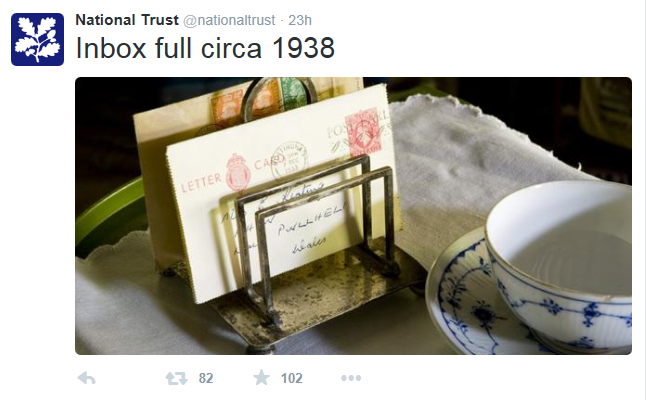This post originally appeared on the JustGiving blog.
A big part of my day job is developing digital strategies and having spent the last few months doing just that for several well known nonprofits, I’m aware how much of an exciting and challenging process it is for organisations to go through. A good digital strategy is the first step towards online success and I’ve noticed that some charities aren’t always aware of the ‘make or break’ factors. Understanding these will help you prepare the ground and manage your organisation’s expectations.
Here are 5 secret ingredients of successful digital strategies.
1. Buy-in is essential
According to Deloitte , digital strategy and corporate strategy are merging into one as digital becomes the bedrock of new ways of living, working and doing business. They predict that if your executive team doesn’t yet have a Chief Digital Officer (the executive in charge of digital) it soon will, and their work will be a catalyst for the innovation and transformation agenda of the CEO. If your charity doesn’t have a Director of Digital yet your CEO will have to fill that role by default. What can we learn from this? Don’t attempt to start your digital strategy without the buy-in of your board, CEO and executive team. If they are new to digital I’d recommend briefing them on the key opportunities and risks.
Completing your strategy will inevitably raise questions about recruitment and the current digital team. If you recruit for a Director of Digital (or equivalent), you’ll need to find someone with both exceptional technical and ‘soft’ skills; McKinsey estimate that they’ll spend 80% of their time building relationships.
2. Establish your digital brand identity
Your digital strategy is the equivalent of shining a great big searchlight on your brand. If you don’t know what your charity stands for, what its proposition is and how it makes a difference then you will find it difficult to stand out online. Branding has come up as an issue in pretty much every strategy project I have worked on. This doesn’t mean that you need to rebrand before you start your digital strategy. It just means that you might need to take another look at your brand identity and see if it is fit for purpose in the digital age. The National Trust are a brilliant example of a charity who have used digital as an impetus to modernise and connect with new audiences.
3. Adapt your tone of voice for social
Social channels such as Facebook and Twitter are informal spaces and your charity’s tone of voice needs to adapt to this. In contrast, I know a charity who had a very emotive, personal tone of voice which they struggled to adapt for the professional content required on LinkedIn. Once you’ve decided which digital channels your charity will use as part of the strategy, dust off your tone of voice guidelines and think about how you can adapt them. Done well, a great tone of voice whether on or offline can become a valuable component of your brand. Movember have a witty and irreverent tone of voice which is memorable and distinctive.
4. Establish your digital culture
The saying ‘Culture eats strategy for breakfast’ is very true of digital. I’ve blogged for JustGiving before about how you can avoid your strategy being stifled by your charity’s culture. Culture is sometimes an afterthought but if your charity isn’t, for example, collaborative it will struggle to adapt to your audience’s expectations of digital. As with your brand, consider what your current culture is like and whether you need to change. What does the right culture for digital look like? Econsultancy’s blog on 10 characteristics of digitally friendly companies is a good place to start. Bear in mind though that you will have to take each of these values and make them your own.
5. Think about internal communications
So you’ve got yourselves a shiny new digital strategy. Excellent work. The next challenge is how you communicate it. I recommend sitting down with whoever looks after your internal communications and thrashing out how it will be shared with staff and volunteers. You may have to take a gentle approach. One organisation I know chose to talk about ‘new ways of doing business’ instead of leading with the launch of the digital strategy. There are lots of resources which will help you on the All Things IC site .
When it comes to getting internal buy-in though always think people and strategy first, tools second. Before you invest in a new intranet, start by having coffee with your most influential internal stakeholders and ask them for their ideas on how to build support for your strategy.
If you follow these tips then it’ll give your digital strategy a much greater chance of success.

